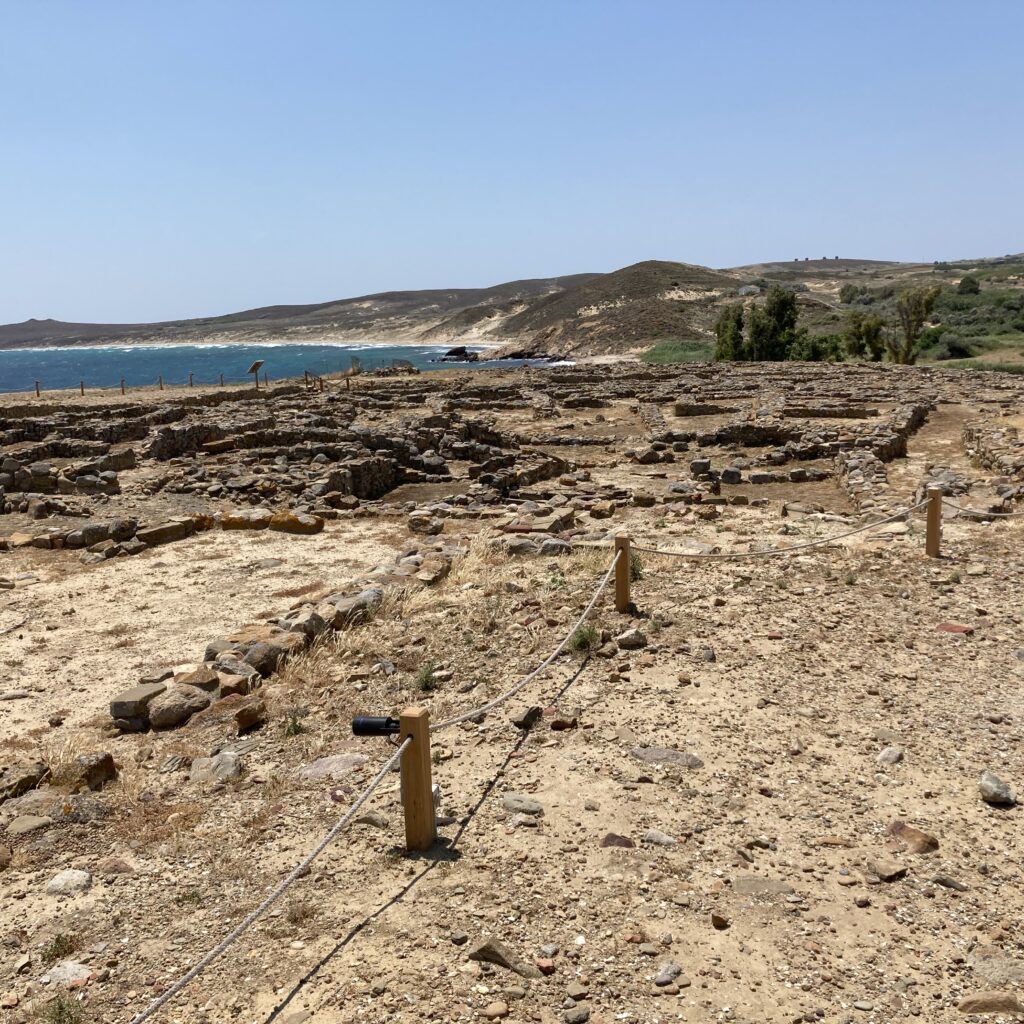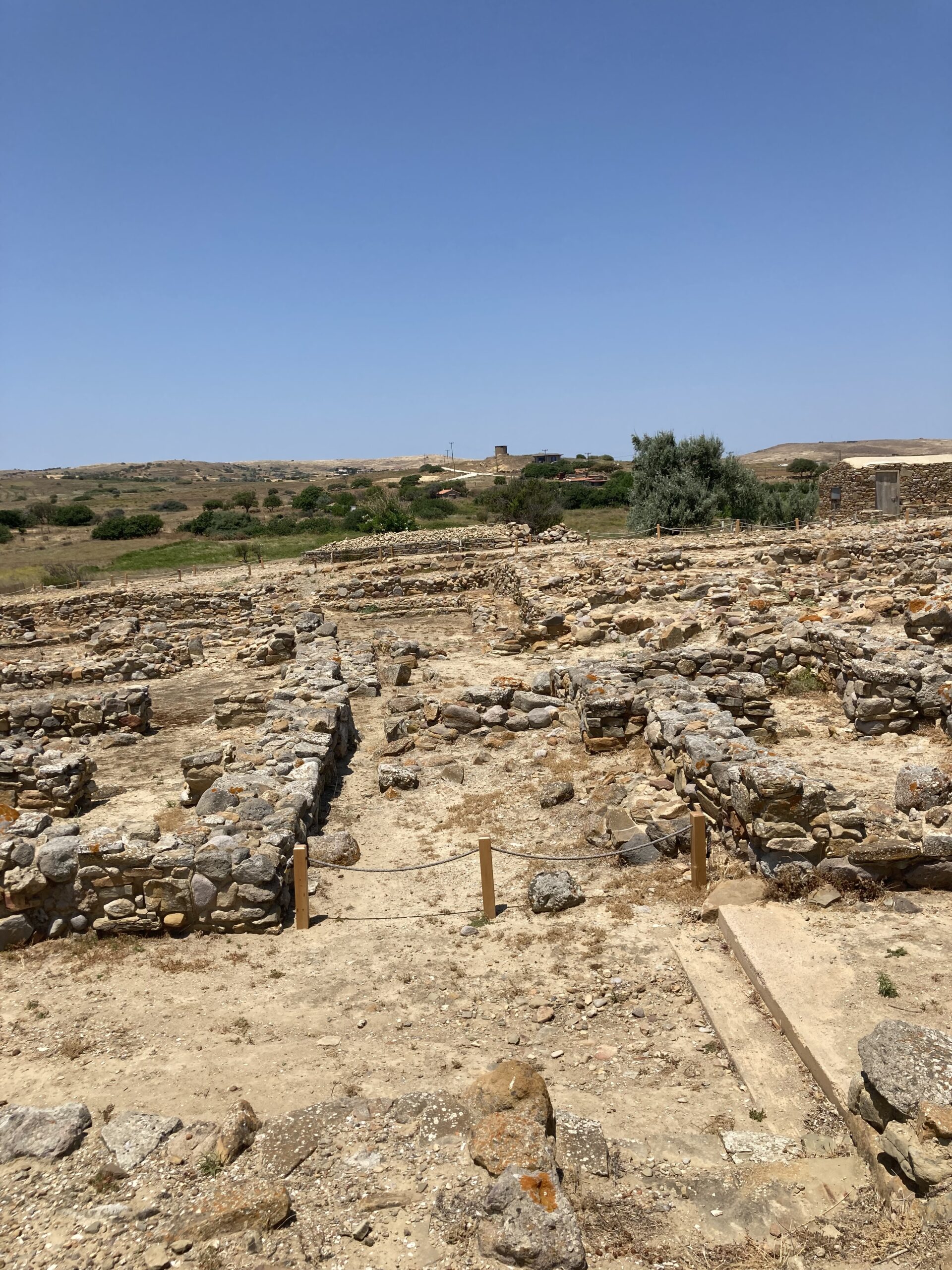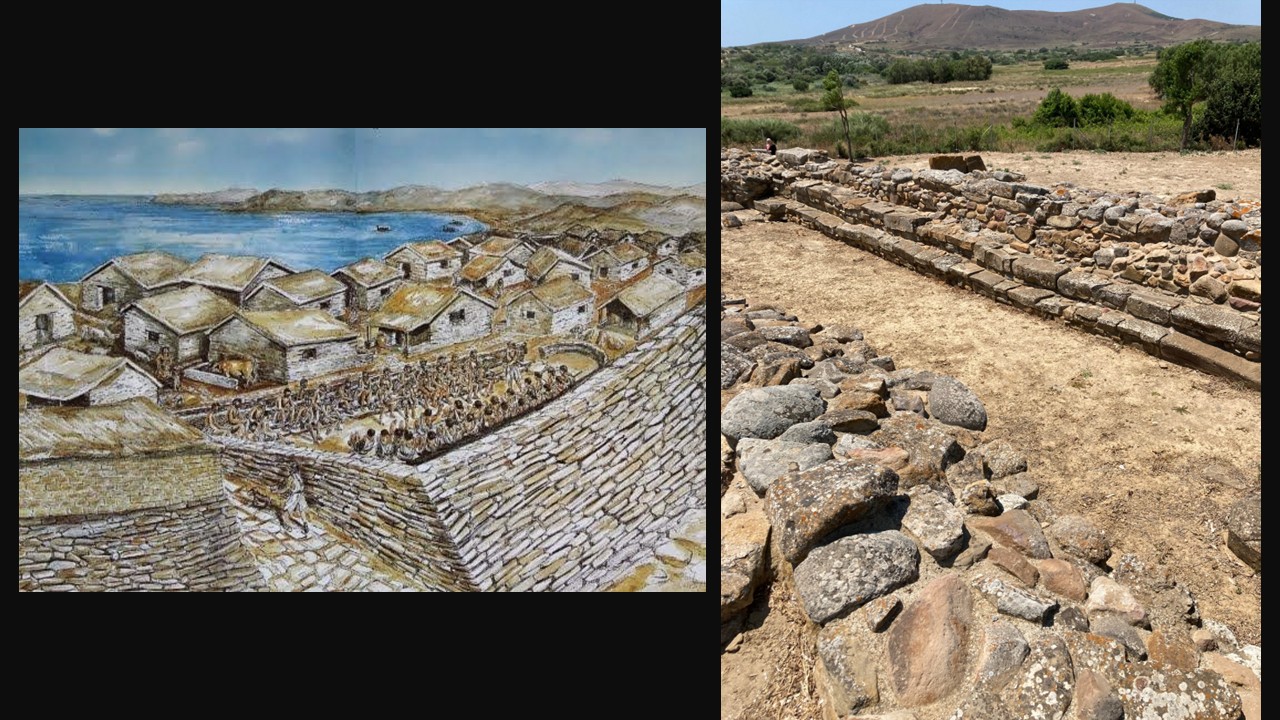
Visiting the ancient settlement of Poliochne on Lemnos offered a rare opportunity to step directly into the early stages of European urban history. Walking among the remains of its carefully planned streets and multi-roomed houses, I was struck by how vividly the site conveys the ingenuity and social organization of its Bronze Age inhabitants. Poliochne, often regarded as one of Europe’s earliest towns, reveals a level of architectural and cultural sophistication that challenges modern assumptions about prehistoric life. Through the photographs I captured on-site, I hope to share both the tangible traces of this remarkable settlement and the sense of awe that comes from encountering a place where history feels immediately present.
Poliochne, on the eastern coast of Lemnos, flourished as a major urban center of the Early Bronze Age. Established around the mid-fifth millennium BC and occupied until the end of the second millennium BC, it prospered thanks to its strategic location between Asia Minor and the Aegean, with safe anchorage, fertile land, and abundant freshwater. Archaeological evidence reveals a sophisticated settlement with strong fortifications, public squares, paved streets with drains, wells, and both modest houses and large mansions, reflecting a complex social and civic structure. Its development unfolded through successive cultural phases, marked by advances in architecture, pottery, metallurgy, and trade, while its decline in the late third millennium was likely triggered by a devastating earthquake. Closely connected to Troy, Thermi on Lesbos, and other centers of the Northeast Aegean, Poliochne was a hub of commerce and innovation, leaving a lasting imprint on early urban life in the wider region.

Photo Credit: Amalia Spiliakou, July 2025
Poliochne, first established during the Final Neolithic period, developed through successive architectural phases that archaeologists have identified by color. In the earliest Black Period (3700–3200 BC), a modest cluster of oval huts built of wood and straw stood at the hill’s center. The following Blue Period (3200–2700 BC) saw dramatic growth: the settlement expanded, a fortification wall was erected on the mainland side, and the urban plan became more organized. Oval huts gave way to apsidal and oblong houses, and public buildings began to appear, including the so-called Bouleuterion, likely a meeting hall for civic leaders, and a large communal granary capable of storing vast quantities of food. By the Green Period (2700–2400 BC), the city expanded further northward with new retaining walls, extended defenses, redesigned gates, and a carefully laid-out road system with squares and wells, reflecting a thriving and increasingly complex urban society.

https://www.thearchaeologist.org/blog/poliochni-of-lemnos-the-oldest-city-in-europe-and-a-cradle-of-democracy and Photo Credit: Amalia Spiliakou, July 2025
In the Red and Yellow Periods (2400–2100 BC), Poliochne contracted in size but reached a peak in monumental architecture. This was the era of the first megarons, rectangular halls that may have served as proto-palatial residences or civic buildings, such as Megaron 832 and Megaron 317. The city’s centerpiece in the Yellow Period was Megaron 605, a grand structure with storerooms situated on a central square, thought to have been the seat of a ruler or elite household. The discovery nearby of a golden hoard, comparable to treasures unearthed at Troy, underscores Poliochne’s wealth and regional importance. A well-preserved network of streets, including a main north–south thoroughfare, demonstrates advanced urban planning. Yet, around 2100 BC, a devastating earthquake destroyed much of the settlement, leading to its gradual decline. Later phases, the Brown and Purple Periods (2100–1200 BC), saw only sparse occupation without the monumental scale of earlier centuries, marking the fading of one of Europe’s earliest urban centers.
Archaeological excavations at Poliochne began in the 1930s under the direction of the Italian School of Archaeology at Athens, led by Alessandro Della Seta, who uncovered nearly two-thirds of the site between 1931 and 1936. These pioneering investigations revealed the multi-phased settlement and established Poliochne as one of the earliest urban centers in Europe. Further campaigns were carried out between 1951 and 1956 by Luigi Bernabò Brea, whose detailed publications systematized the site’s stratigraphy and architectural sequence. Renewed work in the late 20th century, under Sandro Tiné, combined excavation with architectural restoration and conservation, re-examining earlier findings with modern methods. Today, the site remains an exemplary case of early Aegean archaeology, where stratigraphic precision and long-term international collaboration have illuminated the development of urban life in the prehistoric Aegean.
For a PowerPoint Presentation of the Bronze Age Seplement of Poliochne, please… Check HERE!
Bibliography: http://odysseus.culture.gr/h/3/eh351.jsp?obj_id=2534 and https://www.greeknewsagenda.gr/poliochne-on-the-island-of-lemnos-the-earliest-evidence-of-social-and-civic-structure-in-europe/ and https://sites.dartmouth.edu/aegean-prehistory/lessons/lesson-7-narrative/